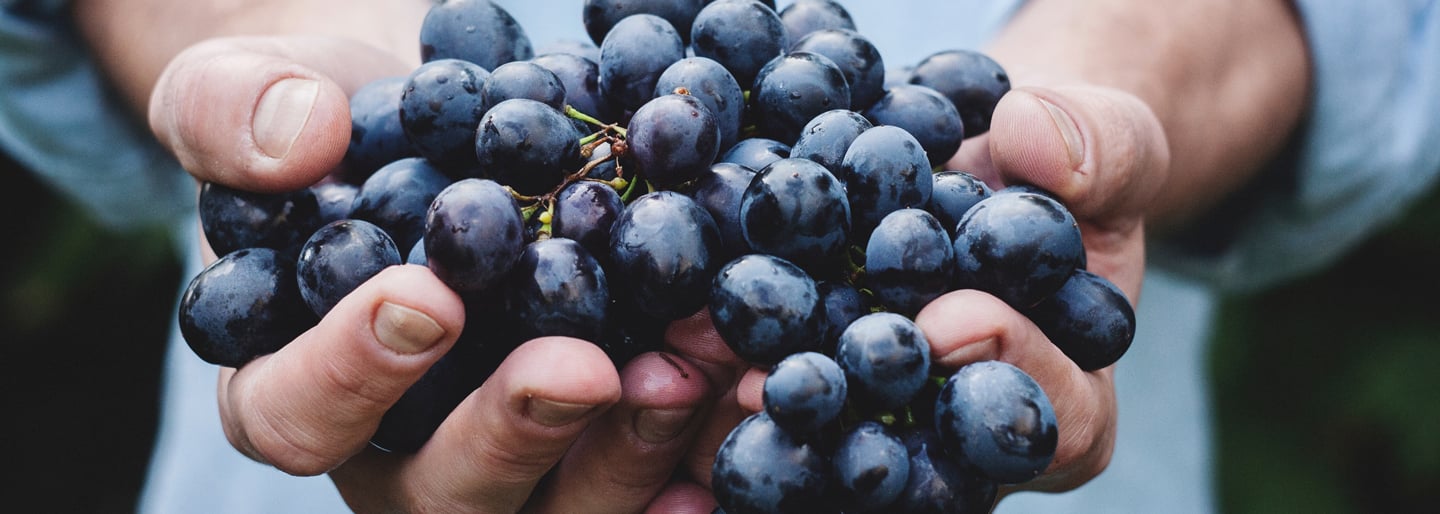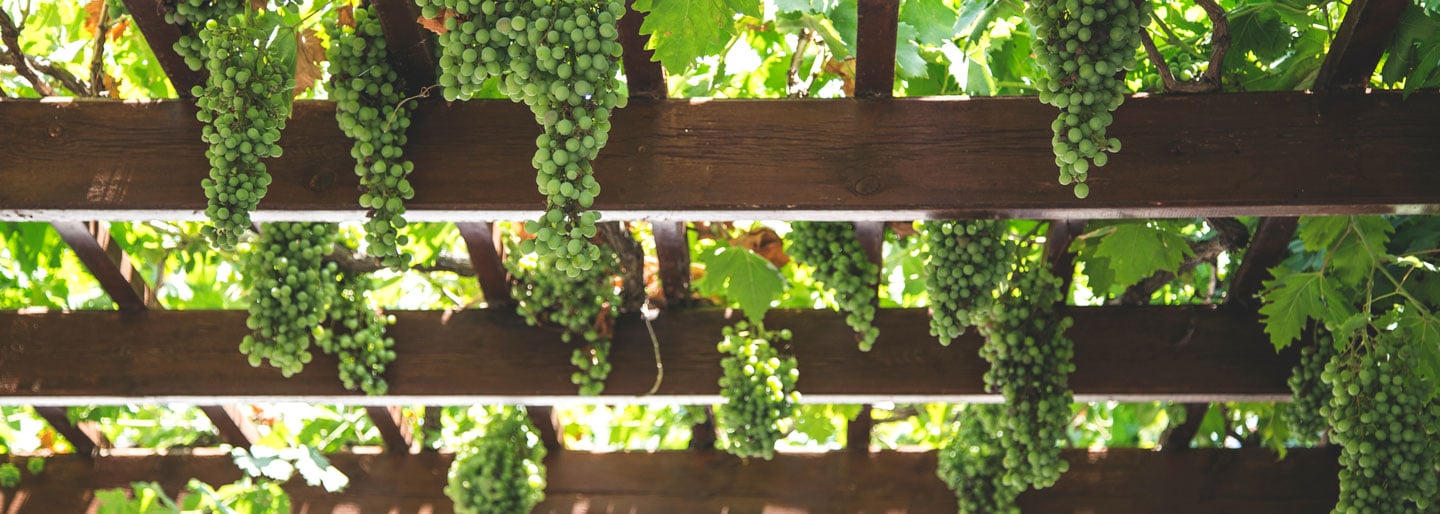Importing wine from Europe to the UK may seem like an overwhelming and unmanageable project, but fear not. Knowing the basic requirements can get you a long way, and with so many great wines–especially from the southern European countries–getting to know the process of wine import is worth the effort. Eliminate an extra step in the buying process: Buy directly from the winemaker and get your wines delivered straight to your door with Transporteca.
Get started on your wine import: The first steps
Due to the UK’s moderate local production, the UK is a big importer when it comes to wine, especially from Italy, France, and Spain.
The first things you need to sort out before you start your wine import is to set up a business, and register as an importer. Both can be done easily and quickly via gov.uk, which also provides a lot of other relevant information on wine import.
Then you must VAT-register with HM Revenue and Customs (HMRC), given that your VAT taxable turnover is equal to or more than GPB 85.000.
Classification of your imported goods is very important, as this clarifies whether there are any import VAT, duty, excise duty, and/or levies due on your imported goods which need to be collected. To classify your goods, you can use the UK Trade Tariff system to look up commodity codes, and duty and VAT rates. When you know your specific commodity code(s), you are ready to declare your imports to HMRC.
Please visit this site for more information on classifying your imports.
If you need assistance or have any questions regarding classification of your goods, you can send an email to: [email protected].
It is also an option to contact an export manager to help you with your wine import, if you are finding it difficult to import and sell wine in the UK.
For information on specific wine-related laws in the UK, please visit The Food Standards Agency’s (FSA) website.

Reach out to your future wine supplier
The next step in the wine import process is to find and make contact with the potential wine suppliers you would like to start trading with. A good start can be to take a trip down to southern Europe and start knocking on the doors of the different vineyards you find interesting.
Winemakers who are not already represented in the UK are likely to welcome you, while there are a lot of winegrowers who will already be represented in the UK by various smaller importers. Therefore, if you are looking for an exclusive deal, it will be necessary for you to pick up very large quantities in order for it to be sensible for the specific winemaker.
VAT basics
When importing goods from another EU country, also called acquisitions, you are required to inform HM Revenue and Customs (HMRC), and you will have to pay VAT at UK rates.
When you are VAT registered in the UK, these imports, or acquisitions, should be added to, and accounted from your VAT Return.
This VAT is also known as ‘acquisition tax’ and you can sometimes reclaim this if the acquisitions relate to VAT taxable supplies you have made.
In some cases you may also be adequate to suspend, defer, reduce, or obtain relief on your import VAT. For more information on this, please contact HMRC.
Even if you are not a VAT registered trader, you are still required to pay import VAT, but you will not be able to reclaim the amount afterwards.
For more information, please see the following site.
Should you have any further questions or concerns about VAT, please visit this site or call the VAT helpline: 0300 200 3700.
Excise Duty on your wine import
In general, you are not liable to pay import duty when you buy or sell goods within the EU. However, some specific goods such as alcohol and tobacco products, are liable to excise duty, ie. wine importers are required to pay excise duty on their wine imports.
The excise duty rates for wine are based on the type of wine, still or sparkling, you are importing and how much alcohol by volume (abv) it contains. Sparkling wine compared to still wine is generally subject to a greater amount of excise duty.
Alcohol excise duty rates (last updated March 2017)
Wine containing between 1.2% – 4% abv (alcohol by volume) – GBP 88.93 per hectolitre (of product)
Wine containing between 4% – 5.5% abv (alcohol by volume) – GBP 122.30 per hectolitre (of product)
Wine containing between 5.5% – 15% abv (alcohol by volume) – GBP 288.65 per hectolitre (of product)
Wine containing between 15% – 22% abv (alcohol by volume) – GBP 384.82 per hectolitre (of product)
Wines exceeding abv of 22% are classified as ‘spirits’ and rates should therefore be found under ‘Spirits duties’
For example: if you are looking to import 600 bottles of wine holding 75 cl (per bottle) with an abv of 13%, the calculation will look like this:
600 x 0.75 liters x GBP 288.65 per hectolitre = GBP 1,299 which should be paid to HMRC.
For the full list of duty rates, please click here.
For further information and help regarding wine import to the UK, please contact HM Revenue & Customs (HMRC), which is the authority that regulates import duty, excise duty, and VAT.
Also, you might find some support contacting Wine and Spirit Trade Association (WSTA), which represents 300+ companies in the UK, helping their members with rules and regulations of producing, importing, exporting, transporting, and selling wine, as well as maintaining standards and serving the interest of businesses involved in wine trade.

Other useful links for information on excise duty and wine import in general
The European Commission’s general overview on excise duties
Guide: Importing wine to the UK
Alcohol Duty rates from 13 March 2017
FSA on importation and movement of wine products
Information on duty free goods
HMRC’s overview of alcohol duties
Price examples on wine import
Once you have found the winemaker you would like to buy wine from, the next step is to find a freight forwarder to collect and deliver your newly-purchased wines. Below we have gathered a number of price examples that apply to pallet transportation within Europe. You can easily find these prices and book the transport at the same time directly online with our website. First, here is a taste so you can get an overview of the price level.
Alicante – London
1 half pallet / 200 kg / 200 bottles
GBP 148
Grosseto – Manchester
1 europallet / 650 kg / 600 bottles
GBP 219
Alsace – Brighton
2 europallets / 1,200 kg / 1,200 bottles
GBP 241
From the above examples, it becomes clear that it is advantageous price-wise to import a full pallet compared to a half pallet, as the price difference between the two is very insignificant compared to the the quantity of extra bottles you can take home.
This is because the heavy costs lie in collection, delivery and handling of the goods, which must be paid regardless of whether you take home half a pallet or, for example, three pallets. Therefore the first pallet is always the most expensive, whereas more pallets can be added for about half the price.
Moreover, prices for road transport will always be determined by the volume, provided that the weight does not exceed the limit of approx. 750 kg (this may vary slightly from one freight forwarder to another). But this means that if you are importing a single europallet, the price will be the same regardless of whether it weighs 100 kg or 600 kg.

Importing wine for personal use
An increasing number of private individuals are experimenting with wine import from the southern European countries–and for good reason–you can both save money and have access to a much larger selection than what your local supermarkets offer.
When you import for private use, you initially distinguish between two categories that determine whether or not you are exempt from paying excise duties:
Category 1: Individuals who themselves bring the wine from abroad to the UK.
Category 2: Individuals who buy wine abroad and pay a third party to handle the transportation.
For the first category it applies that excisable goods, which includes wine, can be brought to the UK VAT and duty free, if the following conditions apply:
You are transporting the wine to the UK yourself, for example in the back of your car.
The wine is exclusively for private use, or the wine is intended for gifts.
You have already paid tax and duty in the origin country.
The second category includes individuals who do not transport the wine themselves, but use a third party, and in this case you are required to pay excise duty, which is determined by the amount of wine and the alcohol percentage.
It is your own responsibility as an importer to inform HM Revenue & Customs (HMRC) of your purchase abroad, whereafter they will make sure you are charged with the correct excise duty and tax amount. Upon arrival in the UK, you must declare your goods, and you will typically have to pay up front if you owe any duty or tax.
Read more about declaring your goods to customs here, and for more information about bringing goods into the UK, see this link.
Volume limitations for imports for private use
When importing wine and other alcoholic beverages, some ’informal’ indicative volume limitations have been set, which are used in assessing whether the wine import is intended for private or commercial purposes.
For both of the above categories, the indicative volume limit for private imports is 90 liters, equivalent to 120 bottles of 75 cl, of which maximum 60 liters can be sparkling wine.
Customs checks
In some rare cases it can be possible to import more than the allotted 90 liters, however, this requires that you can prove that the wine is for private use only, which can be difficult with such a vast amount.
Although there are no official limits to the wine you can bring into the UK from EU countries as a private customer, customs are more likely to check up on you if you are bringing more than 90 liters into the UK.
If the customs authorities have a presumption that the wine is of commercial nature and that you might be importing with a selling purpose, they will stop you and you will have to clarify the situation and answer some questions, such as: the purpose of your purchase, how you paid for it, and how much you usually drink, etc.
If you cannot convince customs, they are in their full right to reject your claim and your import will then be taxable, even if you bring your wine home to the UK yourself. This is why we do not recommend that you import more than 90 liters if you are importing for private use.

Share the transportation costs with others
When you are importing for private use, it can be a good idea to ‘share’ a pallet with other importers, thus sharing the transportation costs. In this way all parties can stay below the 90 liters, and still get cheap and efficient transport to the UK.
However, if multiple private importers choose to import together and split the transportation costs, then it is very important that each importer gets their own invoice for the wine so it is clear to customs that the pallet contains several individual shipments at a maximum of 90 liters. Furthermore, it is also important that the shipments are clearly divided on the pallet, ie. that each shipment is packed separately and labelled with the corresponding invoices.
The best mode of transportation for your wine import
Regardless of where in Europe you plan to import wine from, the mode of transportation is an important factor to consider. It might seem logical to send your wine home in packages, however, we do not recommend this. This is because packages are often sent with a courier: a dedicated transport service for smaller shipments, which offers cheap, efficient, and fast delivery of your goods.
This might sound like an attractive solution, nonetheless, using a courier also means that your wine will suffer from many transshipments along the way, and furthermore, couriers are known for a much rougher handling than regular carriers. This is partially due to the fact that couriers manhandle the goods, whereas regular carriers work with palletized goods, which they handle with pallet lifters.
Palletizing goods is a far more stable mode of transportation, as it secures a better control, thus suffering less accidents and causing less damages when the goods are in transit. Therefore, when importing fragile goods like wine, it will always be most sensible to avoid couriers and get your wine packed on a pallet, so a regular carrier can handle it. This is without a doubt the most secure way to transport your wine, why we always recommend this mode of transport, whether you need to import half a pallet or multiple full pallets.
Typically, a half pallet can hold 200 bottles, whereas a full pallet can carry around 600 bottles of wine.

Booking your wine import with Transporteca
Whether you are importing as a business or for private consumption, the process is basically the same and completely straight-forward. You just specify the type and number of pallets you need to transport and select whether you are a business or a private importer. Once you have found the transport solution that suits your needs, you can book directly online, where we ask you to provide details for pickup and delivery so that we can immediately start the transport of your wine. The freight forwarder will contact your supplier regarding pickup, and delivery will be at your specified address.
For any further assistance, please feel free to contact us.